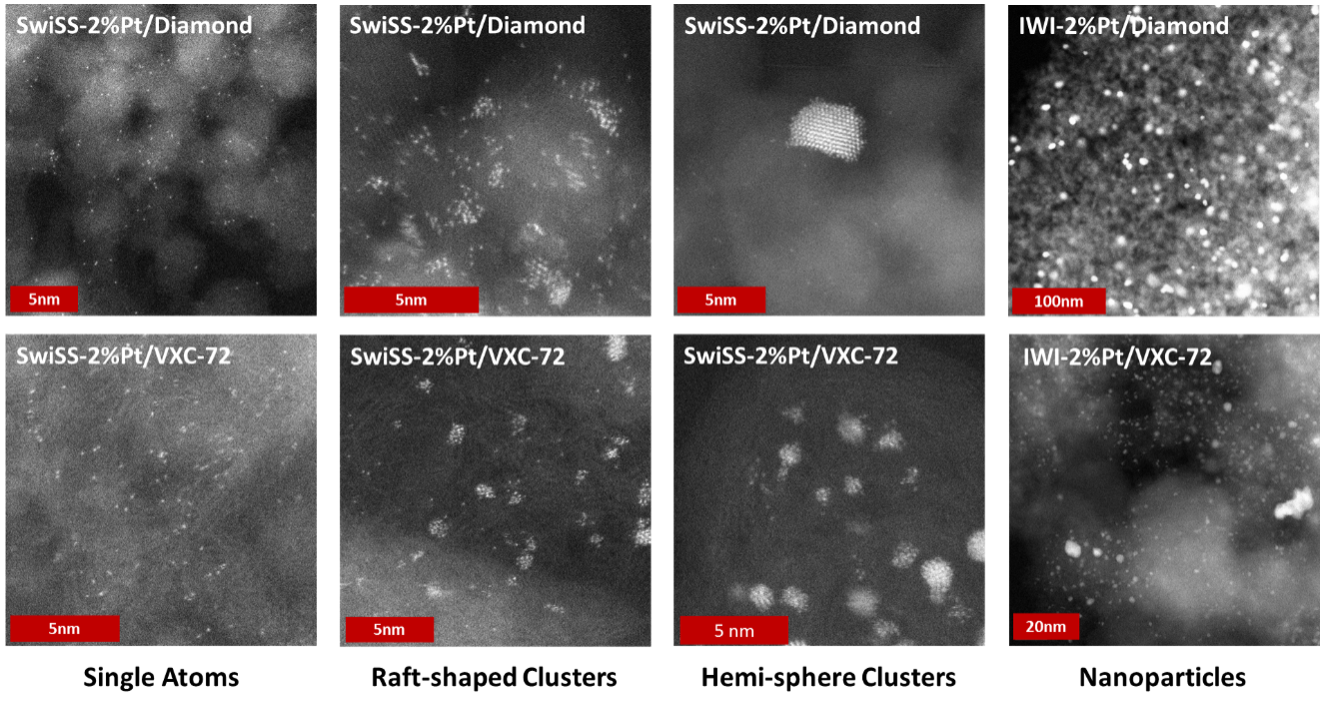2022 Annual Meeting
(292f) Simple, Fast, and Scalable Atomically Controlled Synthesis of Heterogeneous Catalysts
Authors
Abolfazl Shakouri - Presenter, University of South Carolina
Horie Adabi Firouzjaie, University of South Carolina
Stavros Karakalos, Harvard University
Christopher Williams, University of South Carolina
John Regalbuto, University of South Carolina
A large number of synthesis methods resulting in a varied population of atomic species have been developed, but a facile targeted synthesis of isolated metal atoms and atomically dispersed species remained a challenge. The formation of nanostructures specifically on the substrate's surface results from a delicate balance among different physical-chemical forces. Wet chemistry has exceptional features regarding simplicity and scalability, offering the possibility to dissolve or suspend different species (i.e., precursor salt or support substrates). The physical and chemical interactions occur quickly and homogeneously in the liquid synthesis media. Ultimately, liquid can be removed via a simple drying process. However, despite being a common phenomenon, drying plays a crucial role in the organization of synthesis composed of different species. Herein, we overcome the challenges with our scalable synthesis method for high densities of isolated metal atoms and atomically dispersed species like raft-shaped clusters and ultrasmall particles on support substrates. The catalyst synthesis research overlooked a simple force (i.e., the surface tension of the synthesis media) that sinters ions of catalyst precursors before activation of the catalysts. As a result, it forms nanoparticles on the surface of the support. We introduced switched solvent synthesis (SwiSS) to reduce surface tension to form ultra-small nanoclusters or eliminate the effect by altering the surface tension into a wetting solvent and forming single-atom or raft-shaped cluster catalysts. The figure shows representative STEM images of the synthesized atomically dispersed species on diamond without functional groups and Volcan XC-72. Also, STEM images of nanoparticles prepared by incipient wetness impregnation are shown for comparison. In conclusion, we developed a general scalable method to produce single-atom and nanocluster catalysts. The SwiSS method utilizes the basics of the science in wetting surfaces to produce single-atom catalysts or small clusters.


